
SUBSCRIBE ON Apple | Spotify | Sticher | Amazon | Google | iHeart | TuneIn
☞ If you like what you hear and want to help support us, even $1 will help! Thank you.
If you’re anything like us, you’re spending more time in the kitchen lately. A lot more time. Whether you want to or not. And with that comes more questions related to your culinary pursuits. (We know. Because you’ve been asking us an unprecedented number of recipe-related queries each day!)
So we’re taking a break from guests on the show to address some of the most common things that are on your minds. We’ll be doing this again, dear readers and listeners, so kindly share your most vexing questions with us in a comment below and we’ll do our best to address them in an upcoming episode. Until then, be safe, eat well, and love hard on those who are at your table (or who you wish were at your table).
Contents
- Chat With Us
- Transcript
- Why are the Recipes on Leite’s Culinaria’s Always the Best?
- Why Does my Sourdough Bread Spread and Flatten While Baking?
- Why Does my Bread Dough Take Soooo Long to Rise?
- Why Does my Sourdough Starter, um, Stink?
- What Oils Should I Use for Deep-Frying?
- Do I Really Have to Can my Jam?
- How Can I Stop my Pasta from Sticking Together?
- Leite’s Culinaria Latest Recipes
Chat With Us

Have a cooking question, query, or quagmire you’d like Renee and David to answer? Click that big-mouth button to the right to leave us a recorded message. Just enter your name and email address, press record, and talk away. We’ll definitely get back to you. And who knows? Maybe you’ll be featured on the show!
Transcript
Renee Schettler: Hello, David.
David Leite: Hey, Renee.
Renee: What’ve you been cooking lately?
David: Oh God, what haven’t I been cooking?! I just finished today. I baked two loaves of olive, sun-dried tomato, and cheese—Parmesan cheese—bread. Sourdough. Which was delicious. And The New York Times chocolate chip cookies, always making batches of those, I made some for some friends. So, that was nice. That’s today so far. What about you?
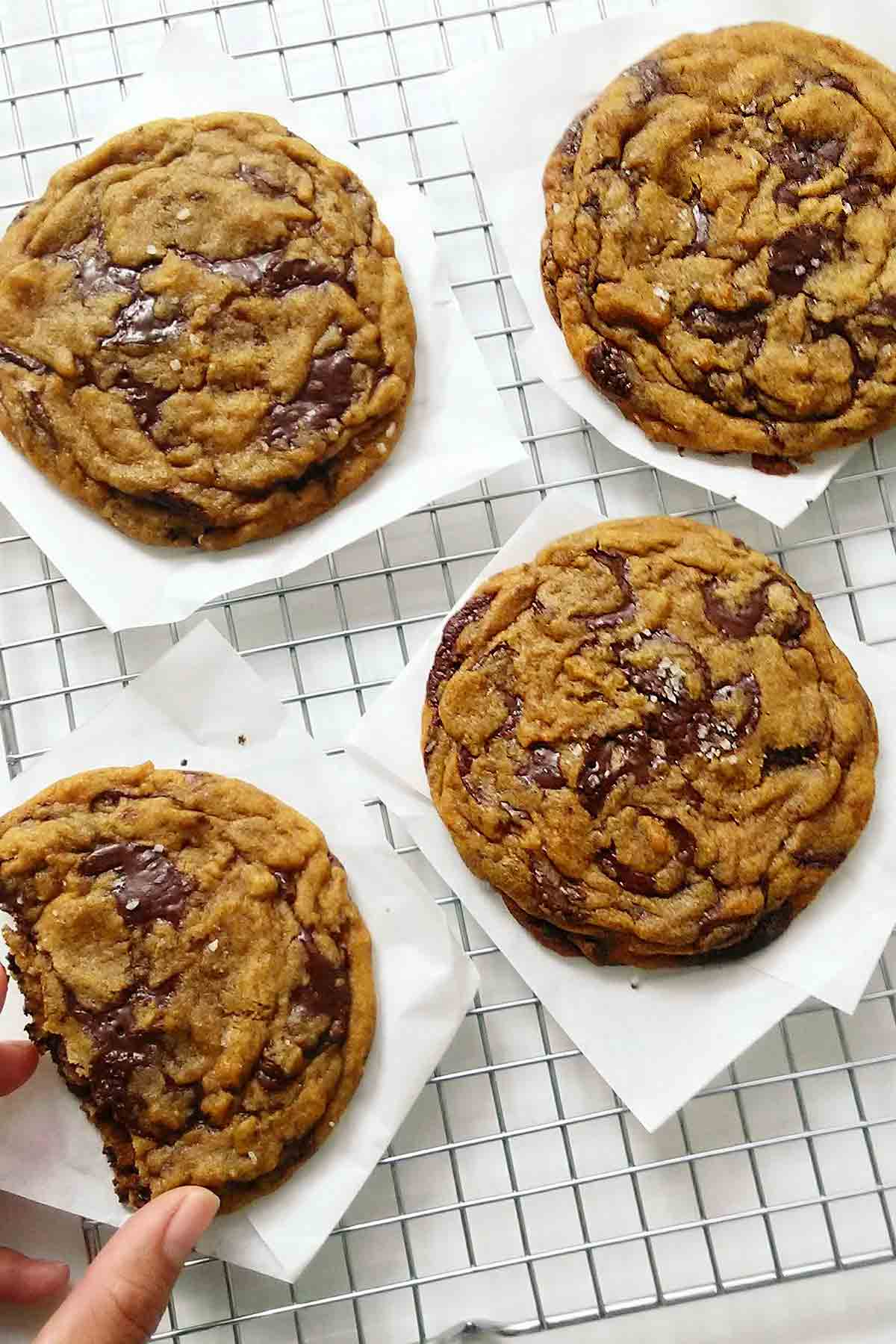
Renee: I just got takeout carnitas tacos.
David: Yeah. Well, you’re in the middle of Arizona, so it’s like, you’re allowed to basically just lie on the floor with a fan and do nothing for eight hours because it’s so damn hot down there.
Renee: Thank you. That’s exactly what I’m doing…with my carnitas tacos.
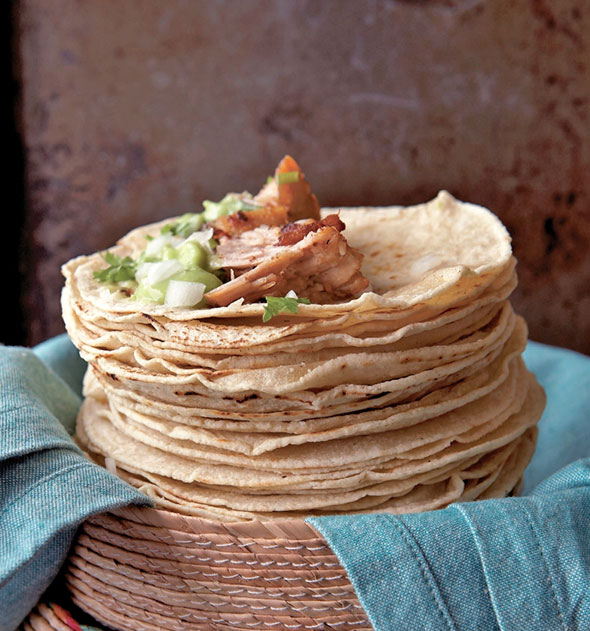
David: Exactly. So while you munch on those carnitas and I lick up the crumbs here from my cookies, for everyone out there, we’ve put out a call to our readers and listeners for us to answer your questions and calm your qualms and fix your quagmires. Boy, do we get a lot of them. This is Version 2.0. We’ve done this once before. So we’re going to answer a couple today, but keep them coming, and in the future you may even be on the show to ask your question live with us.
Renee: Which would be terrific.
David: Yes.
Renee: I’m Renee Schettler, Editor in Chief of Leite’s Culinaria.
David: And I’m David Leite, its founder. And this is Talking With My Mouth Full: Questions, Qualms, and Quagmires V2.0.
Why are the Recipes on Leite’s Culinaria’s Always the Best?
David: So, Renee, here’s a great question I think to start off the whole thing. It came from an email, it’s from Beth. She says, “You guys have the best recipes and I trust whatever you put out there. But how do you do what you do? What’s the process?” I thought that was great because no one really knows really what we do behind the scenes to get the best stuff out there.
Renee: That’s kind of an interesting question. Actually, I think there’s a lot more that goes into it than anyone would ever imagine.
David: That’s true, I agree.
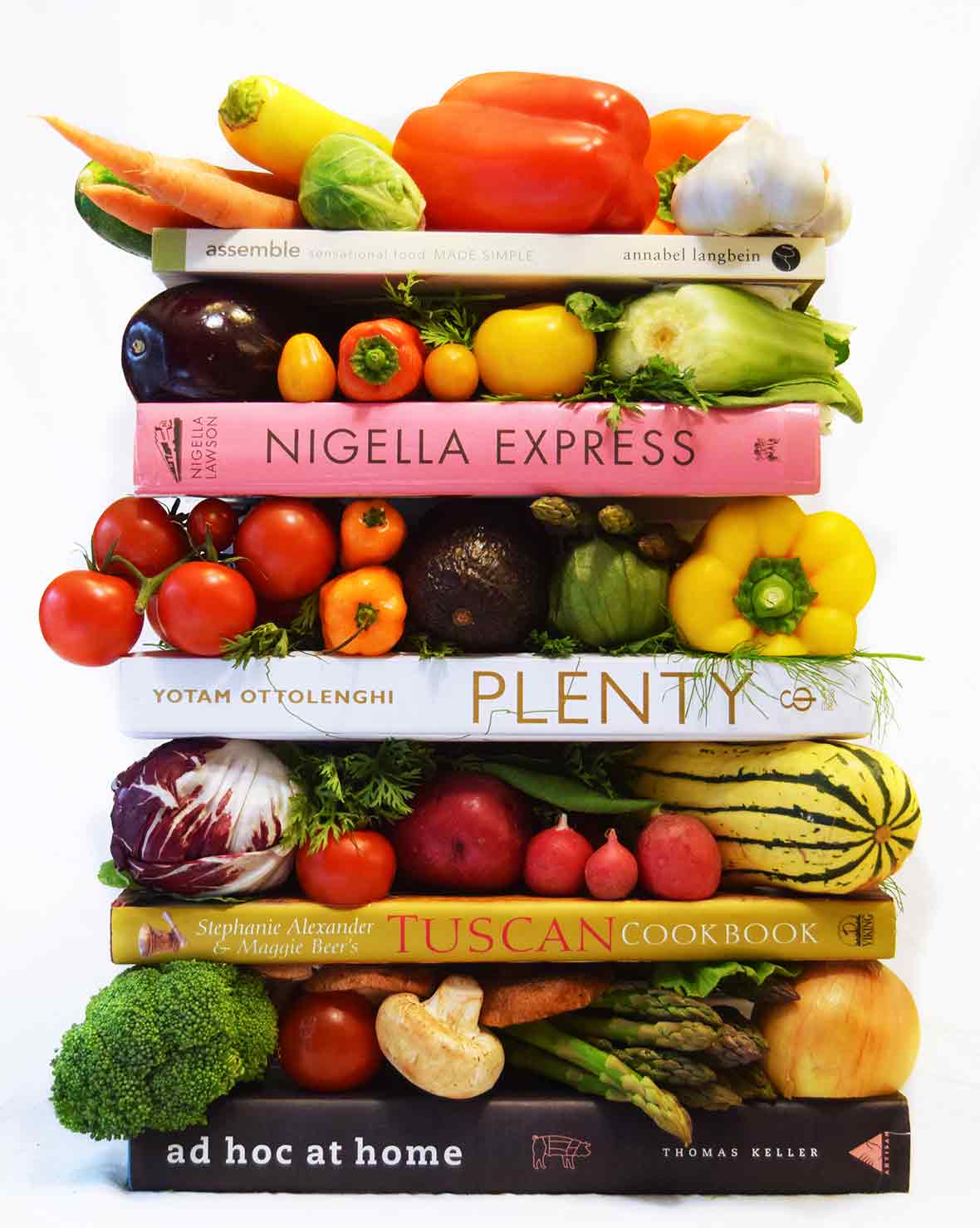
Renee: It starts with cookbooks, right? That’s where we derive most of our recipes from. I receive a copy of every cookbook published in the states.
David: And I think any English-speaking country, basically, too.
Renee: Yeah, a lot of foreign cookbooks as well. And come to think of it, a couple that aren’t in English, not a lot. But then I go through them, page by page, over and over, back and forth, trying to decide what recipes are most compelling, are going to be most enticing to our readers. That’s a little tricky because we try to cover a wide swath, right? Simple, sophisticated, healthy, indulgent, weekend projects as well as something you could just slam together in five minutes, well, maybe 15 minutes. So we look for those recipes, and then we work with the publishers, we’re given permission to reprint them. It doesn’t end there, though. That’s when the work really begins for us.
David: That’s when the work begins. Yes. Yeah, exactly.
Renee: There’s a team of three of us who go through every recipe before we send them out to our team of recipe testers. We’ve got…
David: How many now?
Renee: More than 100…?
David: At least 150. A bunch were just let in.
Renee: It could be. I’ll have to double-check. But yeah, dozens and dozens and dozens of people have eyes on these recipes before they ever have a hope of making it on the site. So before we send the recipes to testers, we go through and ask all these ALL-CAP questions really loud, like shouting, right? Like, did it really just take three to five minutes? Or did it look the way the recipe described?
David: Is it seven grams of salt? Is it nine grams of salt? How much exactly?
Renee: Exactly. Did you really need that optional dollop of chipotle…?
David: Something or other. Yes.
Renee: Something or other. So, no stone unturned. So these people make them in their home kitchens and they give us all their feedback. We ask them to give us a number ranking from 0 to 10—10, obviously being highest. Every once in a while we get an 11, which I love to see.
David: That’s great.
Renee: But they also give us their feedback. Boy, do they give us their feedback? Right?
David: And that’s where the recipes really go to the next level, isn’t it?
Renee: We spend hours editing each and every recipe so that we can address every concern that was raised during testing. Because here’s the big thing that I think not many people realize. Just because a recipe makes it into a cookbook, doesn’t mean it works.
David: Or that it’s spectacular.
Renee: Exactly. Maybe it works, but it’s just like, “Oh, not going to make that again.” But here’s the travesty in that, is that so many people are kind of insecure or new to cooking and they think because the recipe didn’t work, it was their fault. They think they can’t cook.
David: They blame themselves, the blame game.
Renee: The blame game. So that’s why we do this. We really want to prevent that type of experience. I would say in each session, probably at least 30% of the recipes that we test never make it onto the site. They’re simply not good enough.
David: People don’t realize that, that what they’re seeing on Leite’s Culinaria is the best of the best of the best. That’s why we have such a high—I’m not into sports, as you know—but a high batting average, is that what they call it? High passing average or something?
Renee: Yeah, batting average. That’ll work.
David: Quarterbacking average and quarterbacking average. I don’t know.
Renee: We know what you mean. It’s okay. Absolutely. We want to set readers up for success. The only way a recipe makes it onto the site is if it either comes out of the gate amazing, or if we can tweak it enough, either the actual making of the recipe or just even the instructions to make them a little more clear. That’s why people say to us, “You guys never disappoint me.” That’s why we do what we do.
David: Oh God. I know. If I could only hear that in other parts of my life. “You do not disappoint me,” I would be a happy man.
Why Does my Sourdough Bread Spread and Flatten While Baking?
David: So we have another question. This is from Thomas. And this now we’re getting into bread. Thomas says, “I’m getting better and better with my sourdough bread, thanks to your podcast with Andrew Janjigian of America’s Test Kitchen, but I have a problem. My loaves start out great when I put them in, but they start to spread and flatten out when they bake. Any idea why?
Renee: Well, you’re the bread baker, David. Over to you.
David: I am, and interestingly enough, earlier today I had my friend Kevin Masse, who is a great bread baker. He came over here to drop off…what? Bread. And his homemade granola. He’s starting a business. We talked about it, and he said the same thing that I thought, and I actually suffer from this sometimes, too, over-proofing the dough, which means you’re allowing the dough to rise so much before it goes into the oven that there’s just no more juju in the bread. It doesn’t really rise in the oven because it rises too much before that.
David: And I think this also goes hand in hand. It’s interesting we’ve got this question now. It goes hand in hand with the warmer weather. People think, “Oh, leave it out at room temperature for X amount of time.” Well, the truth of the matter is, it’s much warmer in our kitchens right now than it was in January. So, that, I think, is one of the biggest things. So I’m doing an experiment on my next batch of bread, and I’m going to let it sit half the time and see if that saves up some of that spring when it goes into the oven. It’s called “oven spring,” and see what happens. That’s what I think is going on, Thomas. I will let you know.
Why Does my Bread Dough Take Soooo Long to Rise?
Renee: Well, we also received a question that’s kind of the opposite situation. This woman Sarah wrote in saying, “My dough always seems to take longer than the recipe instructs to rise and it never quite doubles.” And she asks if we have any idea why.
David: She live the Arctic? Maybe it’s very cold where she lives.
Renee: I didn’t interrogate her as to her zip code, but I will say that we just had a recipe tester, Jessie, try a bread recipe for us. She was so funny. She told us how her house was crazy cool that day and the dough just wasn’t rising. So she carried the bowl of sourdough bread dough, her “bread baby” she called it, around the house with her. So the warmth of her body would help the dough rise.
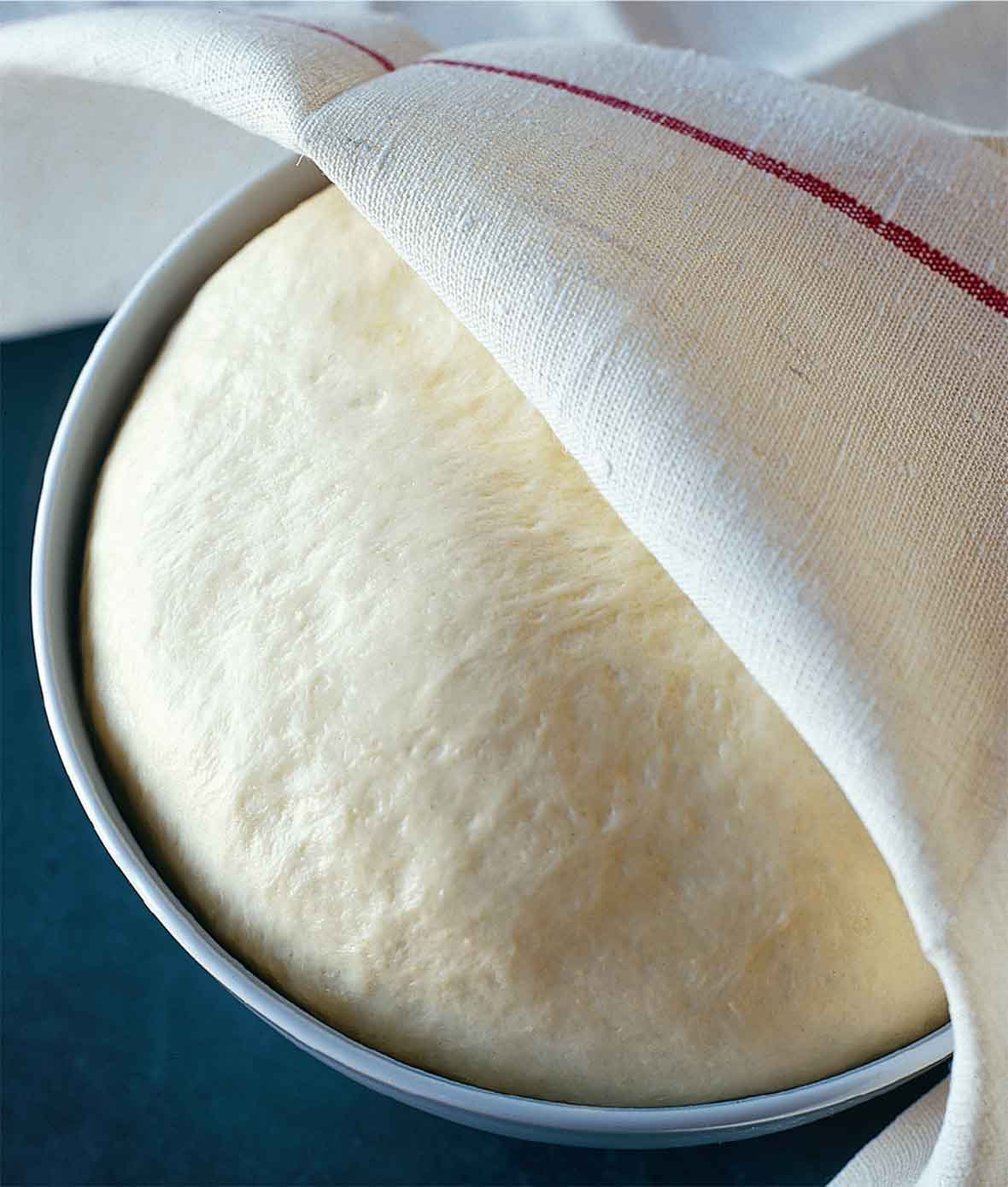
David: Are you serious?
Renee: Yeah, it was great. Do you remember those little flour sack babies you had to carry around in high school?
David: No, I didn’t know.
Renee: You had to pretend that you were caring for an infant…
David: No, I’m too old. I didn’t have that.
Renee: Well, anyways, same idea here. But it worked. So a lot of people I think underestimate as well just how warm it needs to be in order for those little enzymes in bread dough…
David: Right for those people with air conditioning. So my question is for you, Renee, then is not everyone is going to be walking around with a flour sack baby of sourdough, so what do you do then if you don’t want to carry this thing around?
Renee: Well, the funny thing is she shared that story of hers by email. So all of our other testers chimed in with their tips, and the most common one was something I’ve done in the past that works magnificently. You simply put the bowl of dough in your oven, turned off with the door shut, but the light bulb on. And the warmth from that light bulb is just enough to create that environment where the dough is happy.
David: Yeah, and for those people who have a professional oven—we’ve got an oven that really is considered “pro”—sometimes the light bulb can be a little bit strong and a little bit hot. So what I do is I will just keep the light bulb turned off, I’ll blast the oven for like 20 seconds at 200°F, and stop it. So it’s just barely on, and that gives just enough residual heat that it keeps the ambient temperature about 80°F in the oven, and it’s perfect. It just, it does its job. And also one thing to remember, guys, if you are raising your dough in—raising your dough as if it’s a child, right?—letting your dough rise in a container that’s plastic, that kind of insulates it. So you got to be careful with that, too, because the temperature will kind of go up rather quickly. That’s something to think about, too. What kind of container are you letting your dough rise in?
David: So let’s see, we have another question here. Gosh, it’s about bread. Bread, bread, bread, right, Renee? Everyone’s still doing their bread.
Renee: Everyone’s making bread.
Why Does my Sourdough Starter, um, Stink?
David: So this is a question from Terry and she says that she’s tried a sourdough starter recipe and, despite the clear instructions in this recipe, by day five she has to abort due to the stench the starter created in her house. It was a sharp blue cheese smell, and the starter was oozy. That doesn’t sound very nice, does it? She said the directions and the recipe seemed clear until what was happening with the starter didn’t match up with what the recipe says should be happening.
Renee: That’s disconcerting.
David: So, any idea of what you think that could be? I have my thoughts.
Renee: If it was me, I probably would’ve done the same as her and just figured I did something wrong and start over again.
David: Blame, blame, blame. You’re playing the cook blame game. One shouldn’t do that. One should never play the blame game. No, what it is, is…
Renee: Well, what would you do?
David: Well, a lot of times all flours have bacteria on them, which is why some people will see—Andrew Janjigian talked about this—that incredible initial rise when you start doing your starter, day two or day three, you’ll see this incredible rise, because that’s the natural bacteria on the flour or in the flour. But at some point that switches over to what’s the bacteria in your environment, and what’s happening there, most likely it has something to do with the type of flour. Not that the flour’s bad, but basically the starter is saying, “I want to eat. Feed me. Feed me.” That’s what it’s saying, and it wants to be fed. So just take your small little…
Renee: It’s hangry.
David: Yeah, exactly. It’s like me, it’s hangry, very hangry. You take a little bit of that starter and then you feed it, and then eventually that smell will go away. But you’ve got some of that wonderful bacteria starting to take over and owning itself because it’s going from the bacteria in the flour to the bacteria in your home. So, the answer to that is, don’t throw it away. Keep going, persist, persist there, Terry,
Renee: Even in that awkward teenage stage.
David: Yes, persist.
What Oils Should I Use for Deep-Frying?
Renee: Okay, so we’ve got another question, a reader named Debbie. She shared that she just tackled her first doughnut recipe.
David: Oh, good for her. Yay, Debbie.
Renee: Right?
David: Yeah.
Renee: She said her biggest question is a type of oil that she should be using. She said, “I hated the smell of the oil. Was there a certain type I should have used for frying as opposed to sautéing or drizzling?”
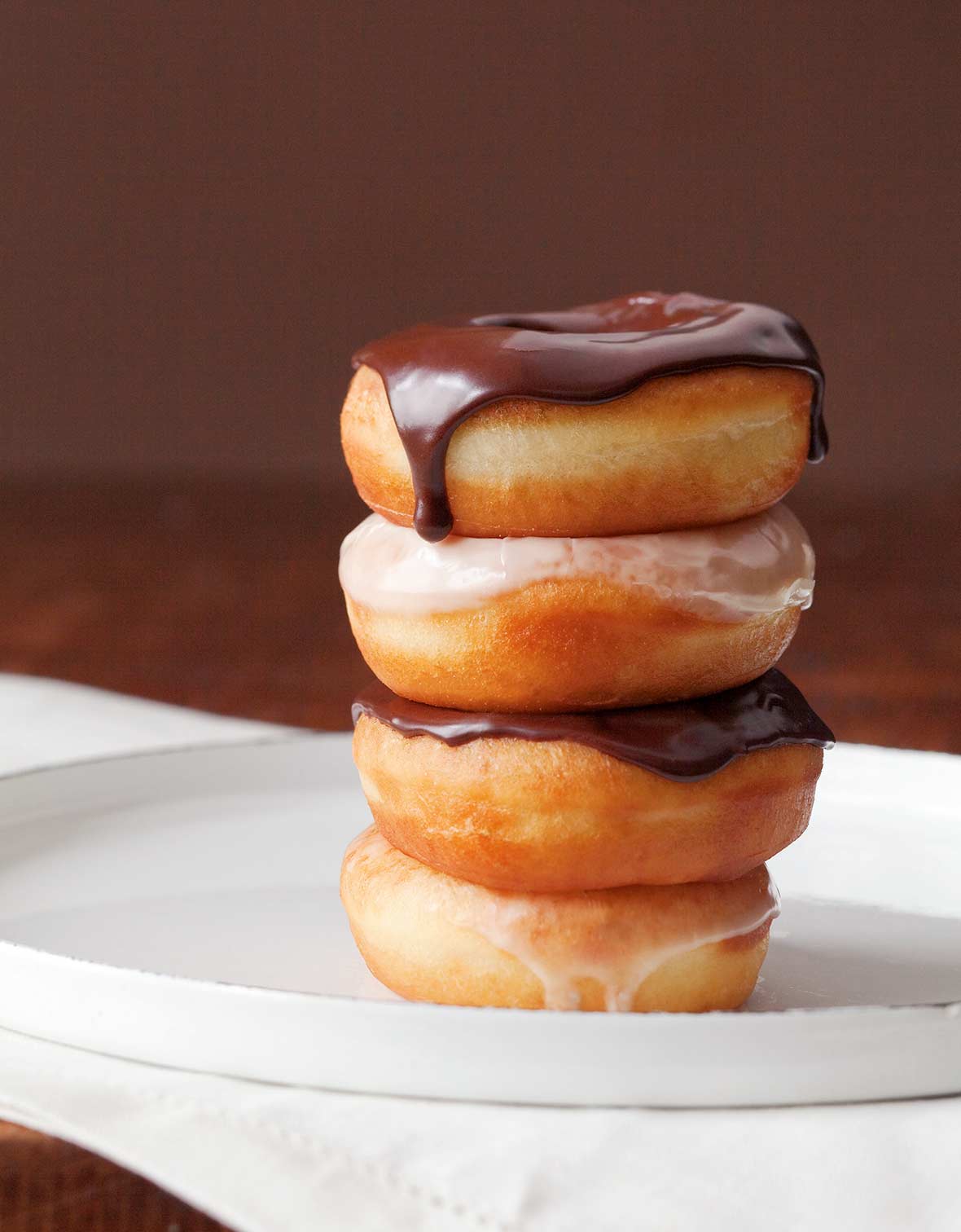
David: Well, do you want to take this one?
Renee: Yeah, sure. I think it has to do not just with the type of oil but with the smoke point of the oil she chose.
David: Right. And a smoke point is?
Renee: A smoke point is, quite literally, the temperature or the point at which an oil begins to smoke. Pretty simple. And different oils have different smoke points, depending on what they’re made from. We actually explained this recently in an article published on the site. We can go into more detail there, but just to keep things simple for here, for deep-frying, especially doughnuts, you’re probably going about 350°F. I’m hoping she was using some sort of thermometer of sorts, right, to make sure that the oil is not getting too hot or dipping too low.
Renee: If you take an oil past the smoke point, not only will it start to smoke, I mean, that’s your first sign, but the oil, the components are going to start to degrade. As they do, they oxidize, and that can throw off all kinds of nasty juju, including an off aroma.
David: And an off taste, too.
Renee: Exactly. So, all those donuts that you spent your morning slaving over. Yeah. Not so good.
David: Yeah. And the kind of oil too, for something like that, I would suggest a neutral oil, a canola oil, maybe using that, or a corn oil. I wouldn’t use peanut oil for something like that, because that would not be right.
Renee: I tend to like a rice bran oil, grapeseed oil, avocado oil is a little pricey.
David: Only thing about grapeseed oil, it’s a bit expensive. Grapeseed’s not what you call it cheap. And you want to make sure that it’s a refined oil, because refined oils have a much higher smoking point, or smoke point, than the unrefined oils. So that’s something to kind of pay attention to, Debbie. I hope that answers some of your questions. So let’s see what we have next.
Do I Really Have to Can my Jam?
Renee: So I hear this question a lot, especially this time of year. And in fact, I’ve asked this question myself years ago. So people reach out, they say, “I want to make homemade preserves, but I’ve never actually done that full official, like half-a-day, hot-water canning thing.
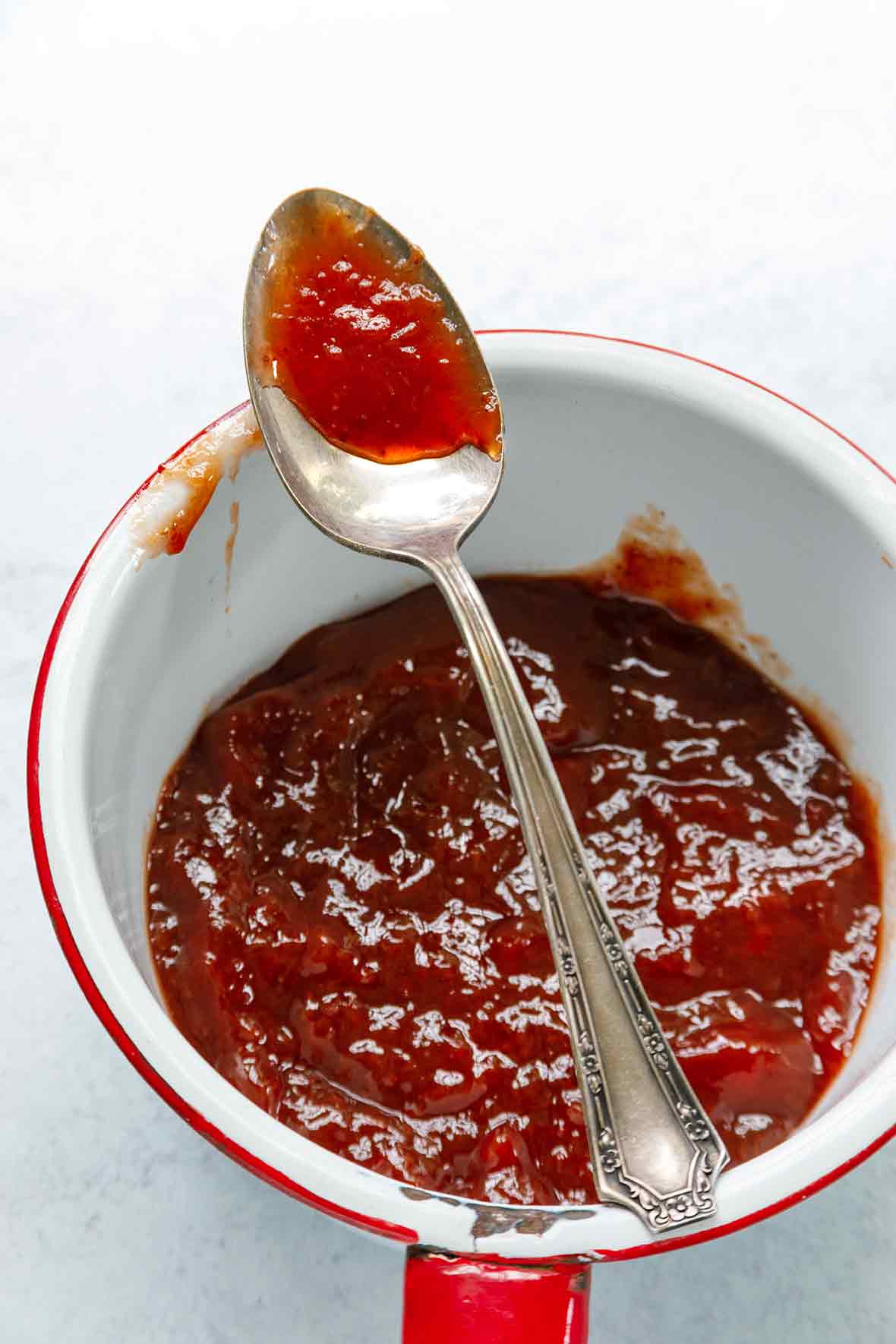
David: The whole sauna thing. Yeah. The jacuzzi.
Renee: The whole sauna thing. They want to know, “Do I have to do that processing even if I just want to make a small batch of preserves? Is there a shortcut?”
David: That’s the jam jacuzzi question, right?
Renee: It’s the quickie. Right? So the answer is yes and no. Yes, there is a shortcut, but you can’t treat it like you would if you did the full deal. We call it fridge jam. What you do is instead of going ahead and ladling the jam into jars, sealing them up, submerging them in water, heating them at the proper temperature for the proper amount of time, then letting them cool, and making sure the little lids are concave.
David: Little popping sounds. Yeah.
Renee: Yeah. I mean, I know it’s really simple once you do it, I’ve been told that by everybody, but I’m just, I’m lazy. Right?
David: It is. You are lazy. No, she’s not.
Renee: We’re going to talk about that later.
David: Very hard working, very hard working.
Renee: So fridge jam, all you do is you take the jam, you put it into whatever containers you’ve got, and you shove it in the fridge. Now, the trick is you’ve got to get rid of it within a couple of weeks before bacteria can form. Because that’s a whole point of processing, is you kind of keep the preserves airtight so that nothing can sneak in that you don’t want in there. But that’s not—come on, it’s homemade jam—that’s not a problem. And if you do think it is a problem, then put it into a nice little jar and give some to your neighbors or your friends or your family.
David: The great thing about this time of year, there’s fruit everywhere. So doing small-batch processing is so easy. Well, not even small-batch processing, small-batch cooking, cooking a pint or two pints of strawberries and cooking it down so you just got a couple of cups and that’s perfect. That’ll go no time. In our house, it’ll go in no time.
Renee: Absolutely. Just look at your recipe and either halve or third or quarter it, depending on the measurements, it’s really easy. It’s not rocket science. If you can do second-grade math, you can do that.
David: Right. Now, if you’re someone who wants to buy 18 pallets of strawberries and 47 pallets of blueberries and 2 trees’ worth of peaches to preserve, then that’s something different and you really should be doing it through the proper processing because you can’t eat that much unless you’re going to be giving it away or selling it. Then it can stay in your closet or your cool pantry for quite a long time, that’s what we do every once in a while. But we tend to do now for the most part here, when we see such gorgeous fruit, we just do a small little batch. Really, sometimes it’s just eight ounces.
Renee: Absolutely. That’s all it takes to satisfy the craving. Right? Especially it’s just me. I live alone, but I still want all those things I grew up on. But I don’t need jar after jar after jar in my basement, like my grandma made.
David: Right, you’re not a hoarder, then basically. Right?
Renee: I’m more of a minimalist. Somewhere in between. I actually saw this referred to one time, so charming, “Instant Gratification Jam.” I thought that was really nice.
David: Oh, that’s sweet. It’s true. It is, because you cook it down and it chills and you have it a couple of hours. That’s good.
How Can I Stop my Pasta from Sticking Together?
David: So we have, this is a very simple one, very common question. I don’t even know who said it, actually. It just came across our transom. How do I make certain my pasta doesn’t get all glued together?
Renee: Yes. Common cooking conundrum. So a lot of times you hear about people slicking their cooked drained pasta with oil to get it to kind of unstick, right? That’s actually a fix for something that should never have happened in the first place.
David: Because that way, if you do that, the sauce will never stick to your pasta.
Renee: Exactly. Everything just slides right off.
David: Slides right off. Exactly.
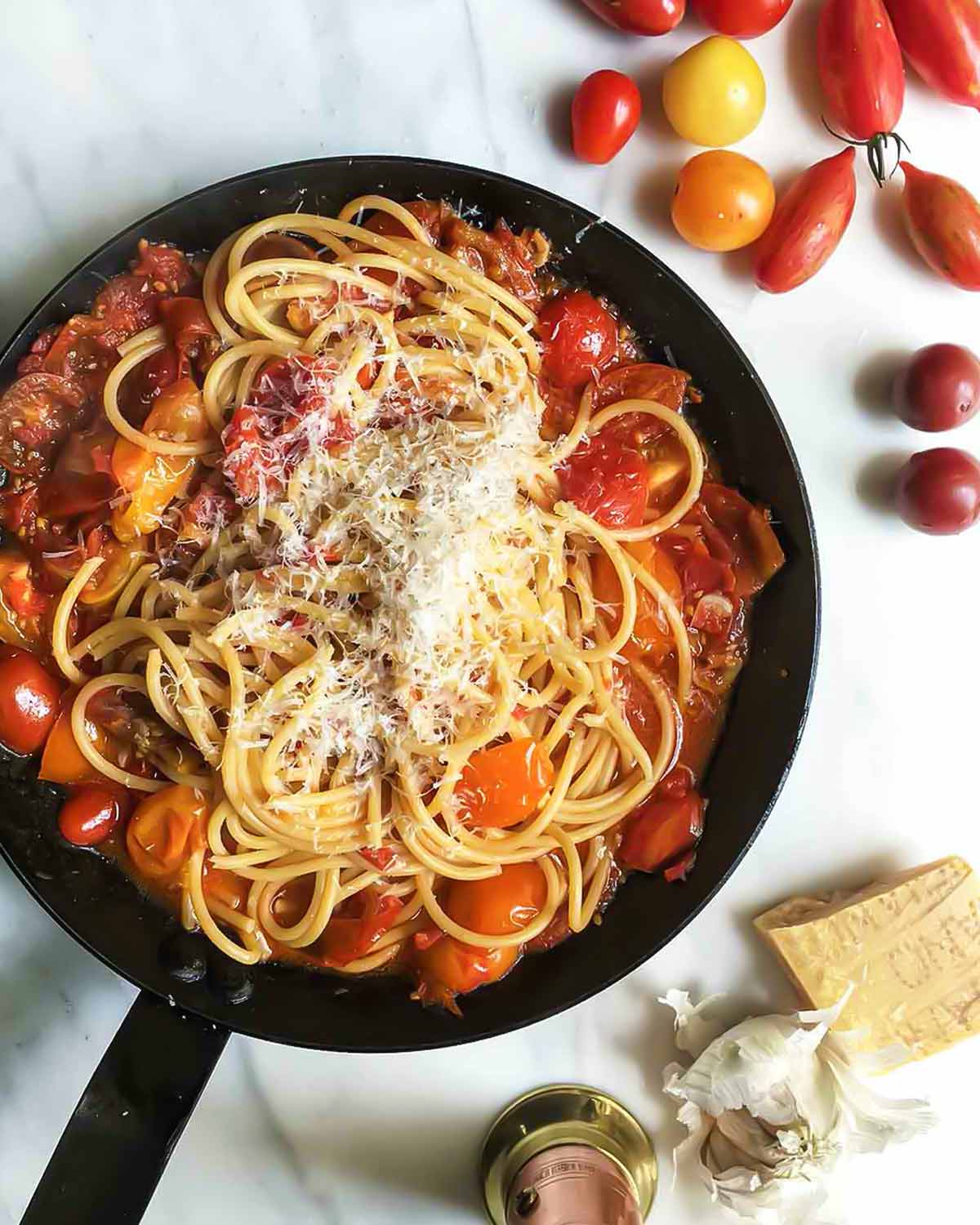
Renee: Yep. So the way to prevent that whole situation is pretty simple. I mean, tell me if you do differently, David, but I just make sure I use sufficient water to cook the pasta. Pasta, obviously it’s a carbohydrate, so it sort of leaks starch as it cooks, and that starch is sticky. It’s not even the gluten, even gluten-free pastas will do this, too. That sticky starch is what causes the pasta to clump together. That’s why you hear that old wive’s tale about knowing pasta is done when you take a strand out of the pot and you throw it against the wall and it sticks, right? Have you ever tried that?
David: Oh, I did it all the time in college. Can’t say it actually worked. I think it’s just more of a wive’s tale. I’ll tell you the easiest way, because I don’t use a lot of water. You say that you’re lazy when it comes to jam making. I’m lazy when it comes to pasta making. If I can make pasta in two cups of water, I’d be very happy. I don’t want to get…
Renee: Well, does it really take that much more effort to pour a quart of water into the pot?
David: No, but it takes that much more time for the water to heat up and boil.
Renee: Of course it does. But…
David: When I want my three-ingredient mac and cheese that we have on the site, I don’t want to have to wait 48 minutes for my three ingredient mac and cheese. I want it in 10 minutes.
Renee: But do you put the lid on the pot when you bring the water to a boil, David?
David: Oh my, does that really help? Oh, I never thought of that. Of course, I do. Of course, I do. The only way to make it work so your pasta doesn’t stick together is as soon as you put it in, stir it, stir it really well. You keep on stirring it. What you’re doing is as that starch starts coming—try to say that six times fast!—as that starch starts coming off and goes into the water you’re making, you’re coating it, so therefore it doesn’t stick. So even things like linguini or tagliatelle or something like that, I just stir for the first minute, and then it never ever sticks. It’s fantastic.
Renee: So you’re basically agitating the water just like you agitate me.
David: Exactly. See that’s why you and I don’t stick together. I agitate you constantly. That’s what I do. I just stir, stir, stir. And the next thing I know it’s not sticking together.
Renee: And the more water you have in which to stir the pasta, the less it will stick. I think you want at least four quarts of water for a pound of dried pasta.
David: Yeah. But you know, maybe there is some formula. I’m sure there is somewhere and some food scientist probably rolling his or her eyes at what I’m saying, that’s probably true. But what I find is that when I use less water, that wonderful pasta water is really rich, so therefore when you pour it into the sauce, you get some more really great stuff going on. It thickens it really nicely as opposed to watered down pasta water. Think about that. That’s a conundrum. That’s like when a bear walks into the woods and claps its hands so does a tree fall, something like that.
Renee: Watered down pasta water. I’m going to have to contemplate that.
David: Watered down pasta water. Exactly. Well, those are great questions. Far more than I actually anticipated, but I think we’ve got some really wonderful things here, and so thank you everybody. Remember, keep sending those questions in and someday we’re going to be able to get you on the show to ask the questions and we can answer you directly.
Renee: We would love that.
Leite’s Culinaria Latest Recipes
David: And you can then ask us even more. So now, Renee, turning to you, it is that time again. Can you tell us what is on the specials board for this week?
Renee: I can. Well, I’ve had a hunch that people are still doing a lot of bread baking, so…
David: I would say, considering we had all those questions, right?
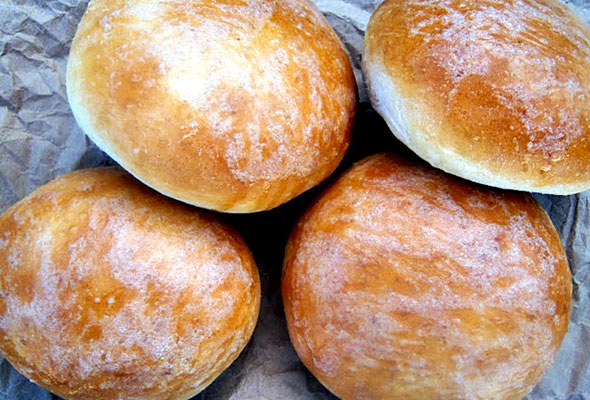
Renee: Considering, right? So in honor of that, we’ve been bringing up some of her favorite bread recipes, including our favorite homemade burger buns. These have all it over the store-bought version, and people who’ve made these are raving about them. They were saying they had no idea it could be so easy to make their own buns at home. These have like a little slightly sweeter taste, but a better texture than anything you can buy on a store shelf. They’re not too dense, they’re a little brioche-like, a little buttery. They’re just perfect in every way.

Renee: We also have that vanilla ice cream recipe. You can make it with or without an ice cream maker. We have a slideshow of all of our favorite rib recipes as well as our favorite fixins—coleslaw, potato salad, cornbread, all the requisite musts. We tell you how to make your own Southern sweet tea.
David: Oh, that’s a must, a must for July 4th.
Renee: If you want to spike it or not, that’s up to you.
David: That’s even more of a must for July 4th.

Renee: Then keeping on our Southern theme, we bring you this Old-Fashioned Peach Cobbler recipe. This is a real old-fashioned approach where, fruit on the bottom, this kind of biscuit-y type crumbly crust on top. Then you pour hot water over the top, and it works magic. The sugar and the biscuit dough and the hot water collide and they make this really crackly crust, kind of like what you get on top of the best brownie. It’s just, it’s superlative. We have so many readers who tell us, they didn’t think fruit dessert could be as good as this.
David: Now that’s great. Anything else?
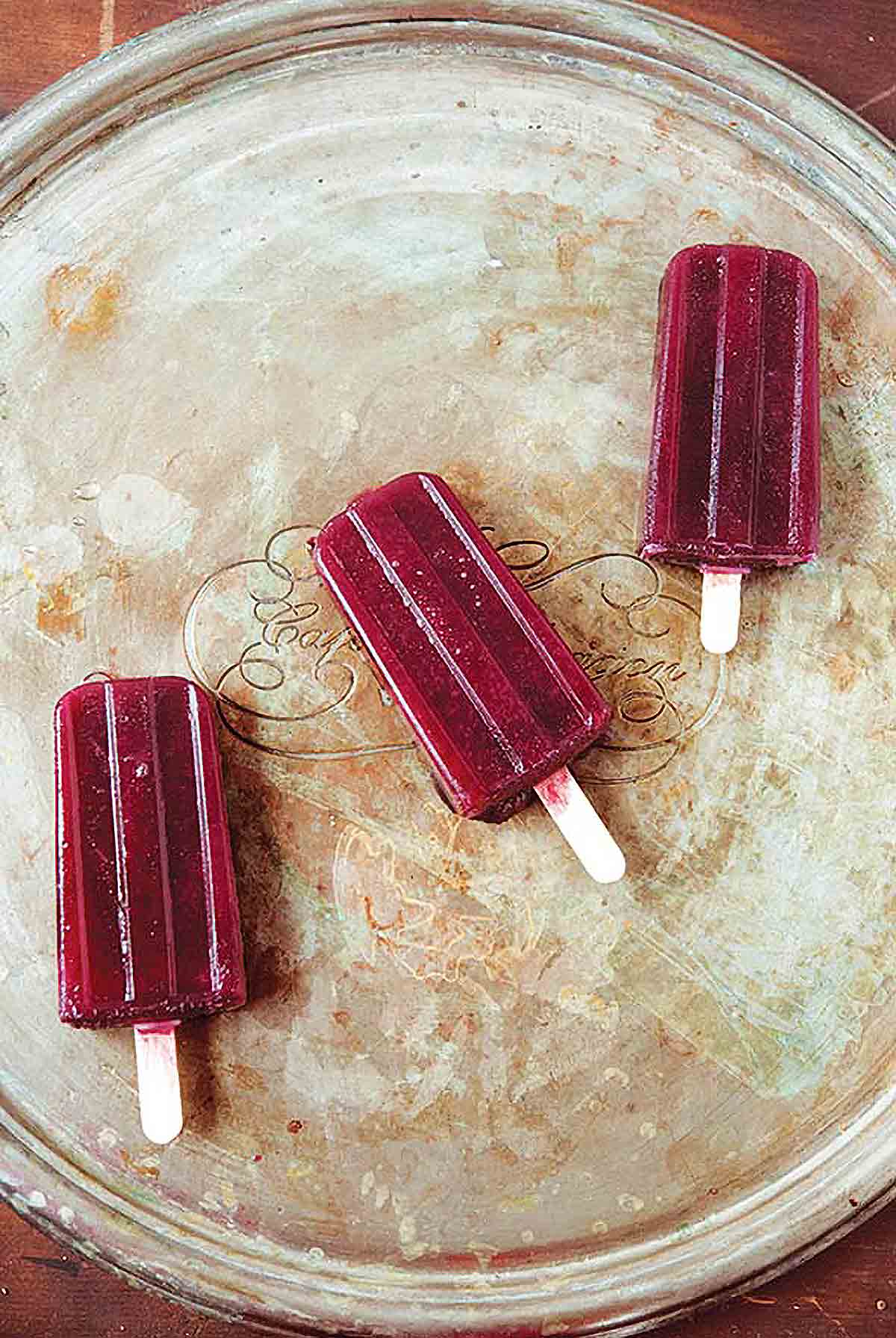
Renee: Oh, we’ve got a lot else. We’ve got coconut popsicles, we’ve got Katharine Hepburn’s famous brownie recipe. We’ve got our Nashville hot fried chicken. You’re just going to have to check it out.
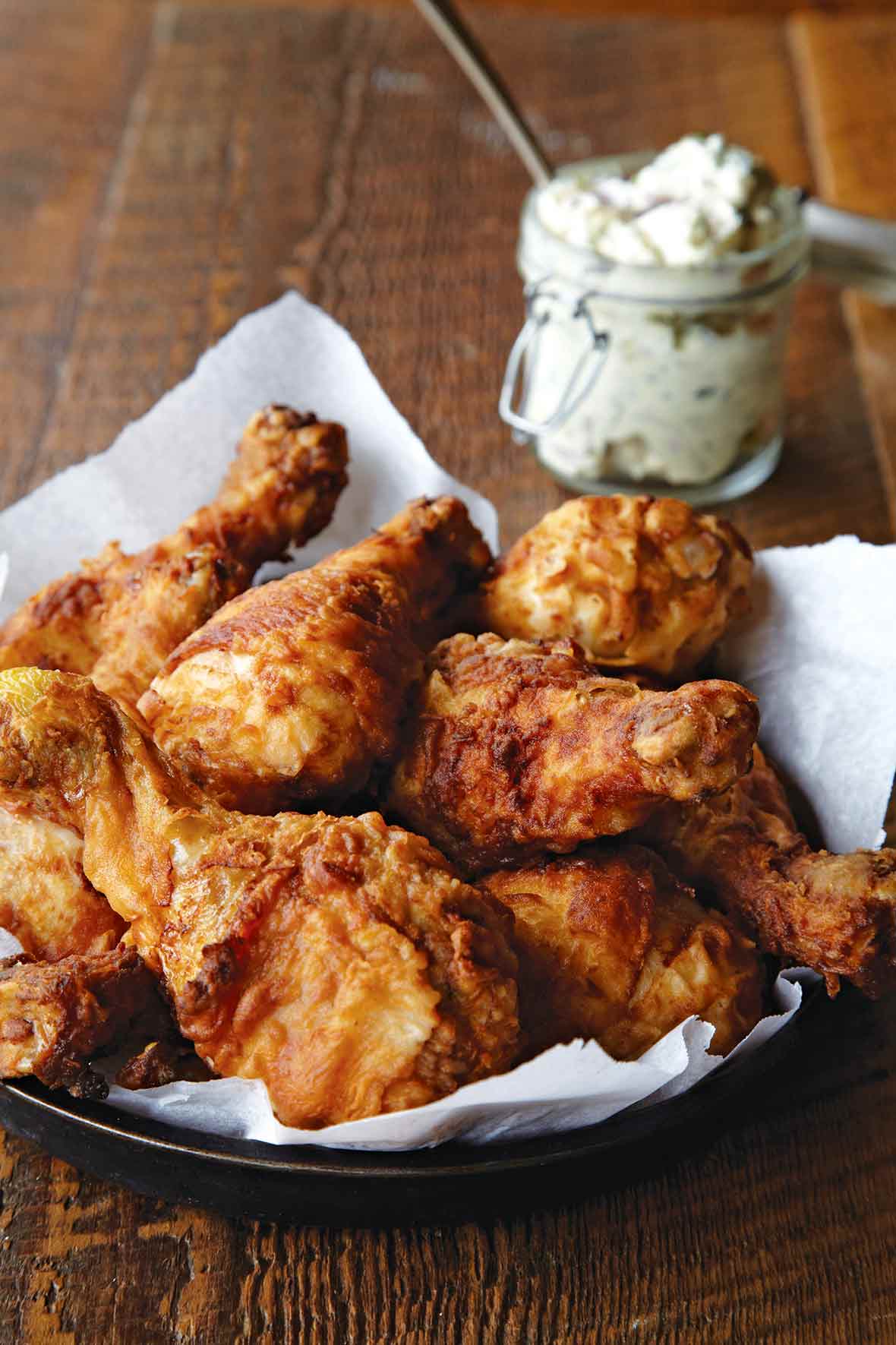
David: Yeah. Maybe I’ll stop by your site one of these days. I heard it’s very good. There’s the David Leighty? I think he’s the one, Leedy, he’s the one who owns it? I think I need to stop by.
Renee: Yeah. Yeah. He’s a little full of himself, but he’s a nice guy.
David: Yeah.
David: This podcast is produced by Overit Studios, and our producer is the pinch hitter, David Parker, in for the vacationing Adam Clairmont. You can reach David and Adam at Overit Studios at overitstudios.com. And remember to subscribe to Talking With My Mouth Full wherever you download your favorite podcasts. And if you like what you hear and want to support us, please leave a review and rating on Apple podcasts. Chow!
Renee: Chow!














I’ve really been enjoying the podcasts. They are the perfect blend of recipes, information and entertainment.
Thank you, Marie! We’re delighted that you’re enjoying them so much.
Loved this episode 🙂 I registered in your site to try some recipes at home, but I never received an email with a recipe. Can you please check what might have happened? Thank you very much! Ana (from Portugal)
Ana, thank you! I registered you again for our newsletter, but you must make sure that you reply to the confirmation email. Check your spam folder or, if you’re using Gmail, your promotions folder. Without the confirmation, it won’t be sent to you. I hope you understand!